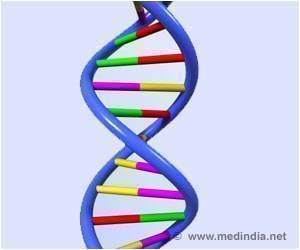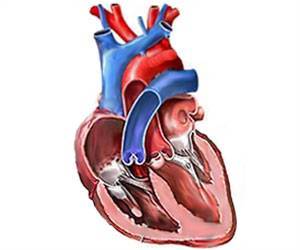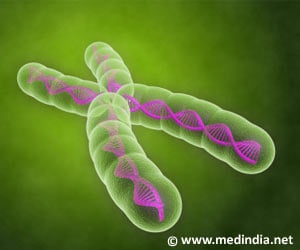A mRNA may travel one way down a cell, then board another, aptly named motor protein and head in the opposite direction to get where it ultimately needs to be, finds scientists.

It's a pretty important journey, because mRNA determines which proteins a cell expresses, differentiating a brain cell from, say, a muscle cell, said Dr. Graydon B. Gonsalvez, cell biologist at the Medical College of Georgia at Georgia Regents University.
"It used to be thought there was a relatively simple scenario where if a cargo needs to go here, it gets on one track and it goes that way," said Gonsalvez, corresponding author of the study in the journal PLOS ONE.
But like a motorist on a backed-up interstate, scientists at MCG and the University of Cambridge, have found that mRNA needs the flexibility to maneuver around potentially numerous obstacles in its path to ultimately arrive at the right spot.
"The ability to reverse their tracks is important to their ability to eventually get where they need to go," Gonsalvez said. And location is really everything, because the proteins need to be expressed in a specific location to function correctly.
While too much misdirection is incompatible with life, a little is OK and maybe even normal. But at levels in between, the health consequences can include Alzheimer's, cancer, multiple sclerosis, and Fragile X syndrome, which can produce mild to severe intellectual deficits as well as physical characteristics such as flat feet and an elongated face. "Most human diseases come from not a loss of a process, but a compromise to the process," Gonsalvez said.
"What we have seen is that there are many things that can reverse that track," Gonsalvez said. "If they can only go in one direction, they can bump into something, like a stray organelle, and get stuck."
He likens the routing system to a ZIP code and thinks proteins are again key, but in this case, they are bound to the mRNA, flagging it for travel. "Something is telling the cell that this message is different," he said.
In the case of Fragile X syndrome, for example, he suspects that one or more proteins that should be bound to mRNA are missing so the cell can't tell the messenger it needs to be moved.
Another question Gonsalvez wants to answer is how mRNA holds on for the ride since the motor protein won't bind with it directly.
"These are not easy questions but the thought is once we understand the answers, we will understand why, when you have a defect in this process, you have a disease pathology," Gonsalvez said.
He notes that transportation of mRNA occurs lifelong, since proteins have a limited life and are constantly being replaced.
His research model is the comparatively simple fruit fly in which the technology is available to selectively knock out motor proteins in specific cells. His published research was funded by the American Cancer Society and the NIH.
Source-Eurekalert
 MEDINDIA
MEDINDIA




 Email
Email




